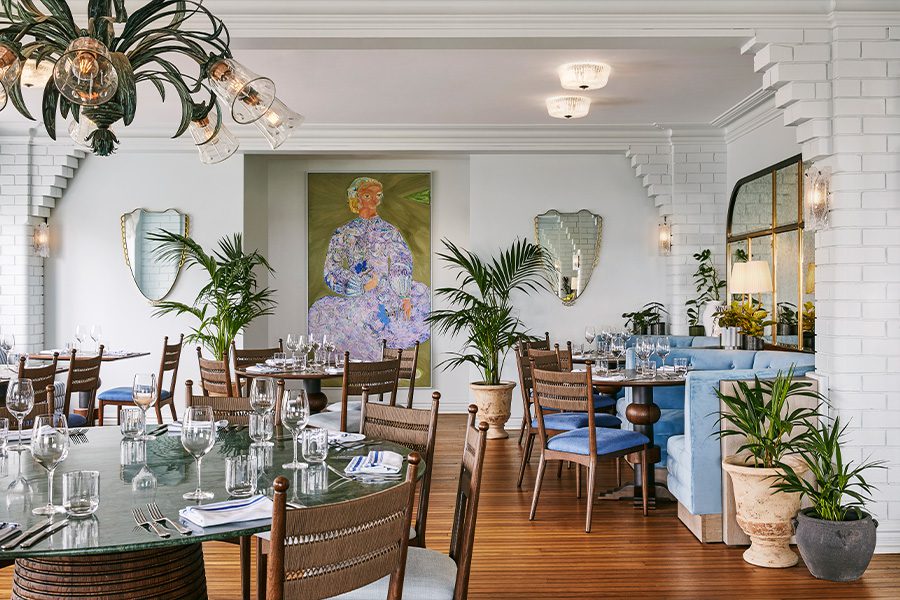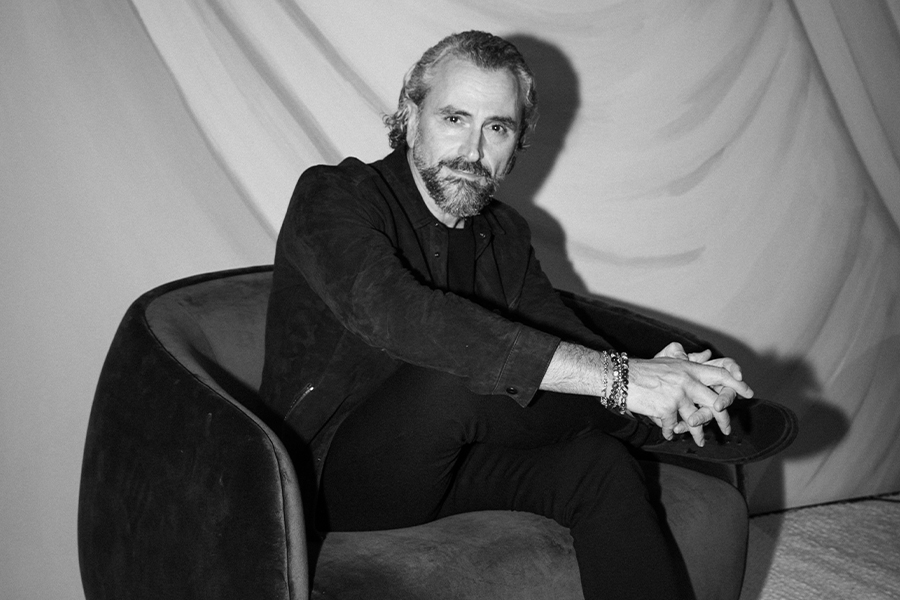After more than four years as Soho House’s design director, Linda Boronkay launched her eponymous studio in September 2020, which operates globally across seven countries and four continents. Here, the London-based designer discusses timelessness, escapism, and how that all comes together.
Tell us about your background.
I was born and grew up in Budapest in a creative family—my father was an architect and my mother founded a Pulitzer-winning design magazine. She was also an obsessive collector of art, antiques, and all things beauty. Design and art have been integral in my upbringing. I studied fashion design in Paris before embarking on the interior design journey. Before establishing my company, I worked at Tom Dixon, Woods Bagot, Tara Bernerd, Martin Brudnizki, and, most recently, as design director at Soho House.
What led you to launch Linda Boronkay Design Studio?
A variety of circumstances that all happened around the same time prompted me to launch my own company: I became a mother, so my outlook on life and what I wanted from it shifted completely. Then the pandemic hit so all my projects at Soho House were either delayed or on hold indefinitely. My team started to shrink, and, at the same time, I started to get some amazing opportunities for private projects. Everything pushed me toward the same direction, so I went for it.

Boronkay partnered with Sydney-based Mac Design Studio on the design of Osborn House
How would you describe your design style?
I love blending the contemporary and the antiquated—designs that bridge the masculine and feminine, creating unexpected juxtapositions and combinations, which make a subtle statement. My goal is always to create timeless design with materials and objects that appear dredged from the past or different cultures. As a studio, we are passionate about bringing the historical and cultural connection to life and telling that story in a genuine and authentic way.
In a way, my style is classic in terms of approach. I like a warm, residential atmosphere, be it a hotel, restaurant, or someone’s home. We like spaces that look real, accumulated over time. But we also love to experiment with new designs and ideas. No two projects are ever the same. We always start from scratch and with the same enthusiasm and curiosity.
What do you love most about hospitality design?
I love creating a fantasy, a sense of escapism, which is easier to achieve in a hospitality environment. Here, we can use stronger design features and bolder concepts as people come to have a great time in search for what they don’t have every day or at home.
How has the hospitality world changed since your career first started?
Design is becoming more exuberant, experimental, and bolder. At the same time, people are more well-traveled so they are looking for experiences that are authentic and sympathetic to their environment—to the architectural, cultural, and historical context.

The library at Osborn House features custom furnishings and an open fireplace
Tell us about your recent projects.
We just completed Osborn House, a 5-Star hotel consisting of 15 suites, seven cabins, a spa, and two restaurants in the Southern Highlands in Australia. The concept is country living—a comfortable, authentic, and characterful interior that is respectful to its surroundings and the history of the building. [Most] design elements were created bespoke or sourced from vintage markets around Europe, and we worked closely with artists to create the art collection. Jai Vasicek, for instance, filled corridors and front of house areas with his beautiful art.
This month, we are installing a private family club for an UHNW family and their close circle in Madrid. Located in a 1970s brutalist building, in the most glamorous district of Madrid, the interior takes inspiration from the architecture and its era. We created a series of bespoke lights, furniture, and rugs with local craftspeople, and sourced many of the vintage items in markets in Italy and Spain. The colors are vibrant and the textiles tactile. We used local marble and tiles to create our schemes and local artisans and craftspeople for the bespoke elements.
What is the most difficult part of the creative process for you?
The process becomes difficult when there are too many consultants or clients involved in a project and there are many moving parts with little structure, direction, or client brief. For us, this is when things can get confusing, slow, and might lead to lots of abortive work.

Dinah’s Dining Room is one of the two F&B options at Osborn House
You have a great Instagram feed. Has it influenced your business?
I really enjoy doing it and it’s a great creative outlet. I find a lot of inspiration on the ‘gram and if I can share these inspirations, then it’s worth doing it. To be honest, I don’t think my page has drawn in any new clients, but it speaks volumes about my personal aesthetic and design philosophy. It’s a mood board of my creative thinking, and I’m sure if someone has had their eye on me, looks at my page, and likes what they see, then it’s a reassurance.
If you weren’t in your current career, what would you be doing?
I would have been a writer, an actress, production designer, or an explorer—anything that involves creativity, traveling, meeting lots of interesting people and cultures, and poses an ongoing challenge.


